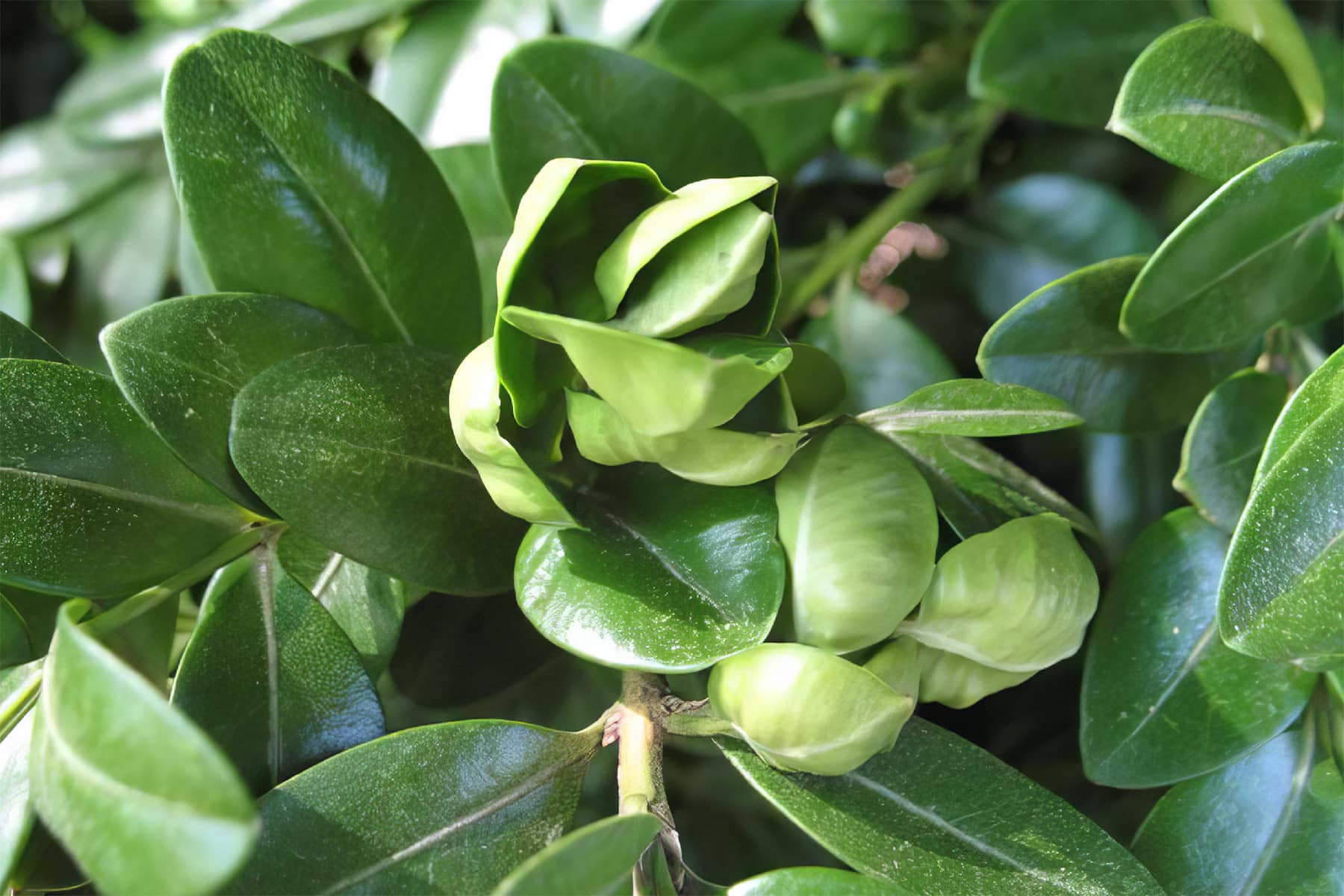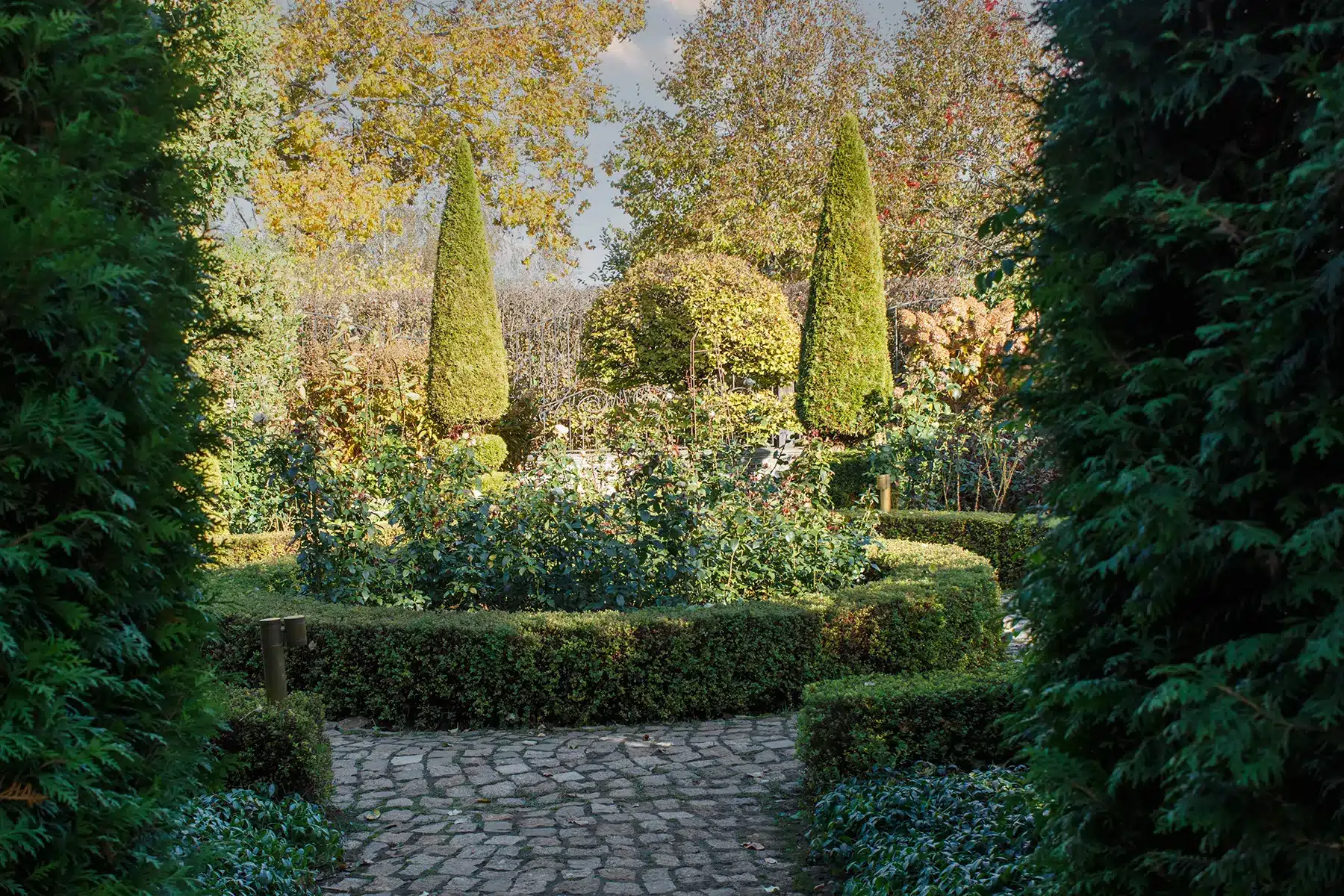Boxwoods, a favored evergreen for landscaping, are prone to pest infestations. In and around St. Louis, two common pests pose a significant threat, rapidly damaging or even causing the death of these plants if not properly managed. Here’s what you need to know to combat these pests.

About Boxwood Leafminer
Boxwood leafminer, when left untreated, can cause serious damage to a boxwood plant. These pests damage the boxwood by feeding between the upper and lower parts of the leaves. This causes the leaf to blister and turn yellow, leading to eventual leaf drop. While all boxwoods are susceptible to leafminer, English boxwood (Buxus sempervirens) and its cultivars are more resistant to Boxwood Leafminer.
The Life Cycle of Boxwood Leafminer
Early in spring, the previous year’s larvae will pupate, causing affected leaves to blister and swell. The adult leafminer, technically a gall midge, will emerge by May. This adult leafminer resembles an orange-red mosquito.
Once the adult leafminer has mated, the female will lay an average of 20 eggs on the underside of a single boxwood leaf. These eggs will hatch in 14 to 21 days.
After the eggs hatch, the larvae feed on the inside of the boxwood leaf, “mining” out the leaf until it is hollow. This mining causes the leaves to blister and turn yellow, with the damage occurring during the summer and fall. On heavily infested plants, you can hear the larvae feeding, a sound similar to Rice Krispies crackling.
How to Treat Boxwood Leafminer
Controlling adult leafminers can be difficult due to their short lifespan. The best time to spray for adults is when Weigela blooms, typically around the beginning of May.
Systemic insecticides are the most effective way to eliminate Boxwood leafminer. Apply these products from late June throughout the summer.

About Boxwood Psyllid
A common symptom of psyllid (Psylla buxi) damage is the cupping of young leaves in the spring. This happens when the psyllid pierces and sucks the sap from the buds of young leaves. These leaves will typically fall off within a year.
The Life Cycle of Boxwood Psyllid
The Boxwood psyllid overwinters as eggs between the bud scales. As fresh growth appears in the spring, the nymphs feed on the buds, causing cupping at the tips of the new season’s growth. Mature psyllids appear from May to early June. They are 1/16 inch long and resemble miniature cicadas. The adult psyllid lays its eggs in the bud scales in June and July.
How to Treat Boxwood Psyllid
Boxwood psyllid damage is often aesthetic, and the plant’s health is seldom affected. Where psyllid damage is minimal, prune out the damaged tips before the psyllid matures into adults.
Apply horticultural oils or insecticidal soaps in early May. Severe infestations may require the application of systemic insecticides.
By devoting time and attention to accurately diagnosing and effectively managing any insect problems that may arise with your boxwood plants, you can ensure their longevity and maintain their aesthetic appeal. This commitment to their care and maintenance will not only keep them looking their best but will also ensure that they continue to thrive and add beauty to your garden for many years to come!



